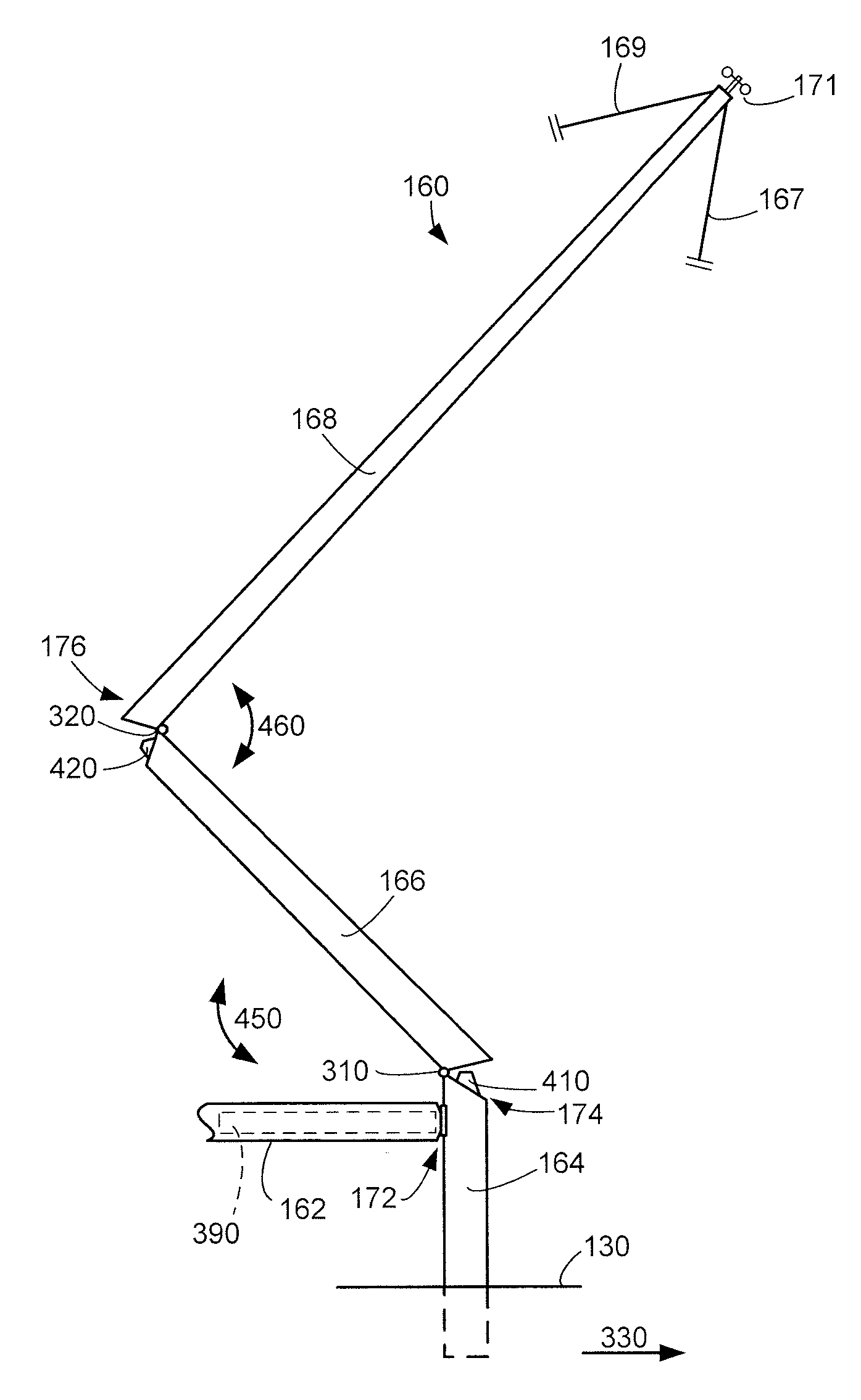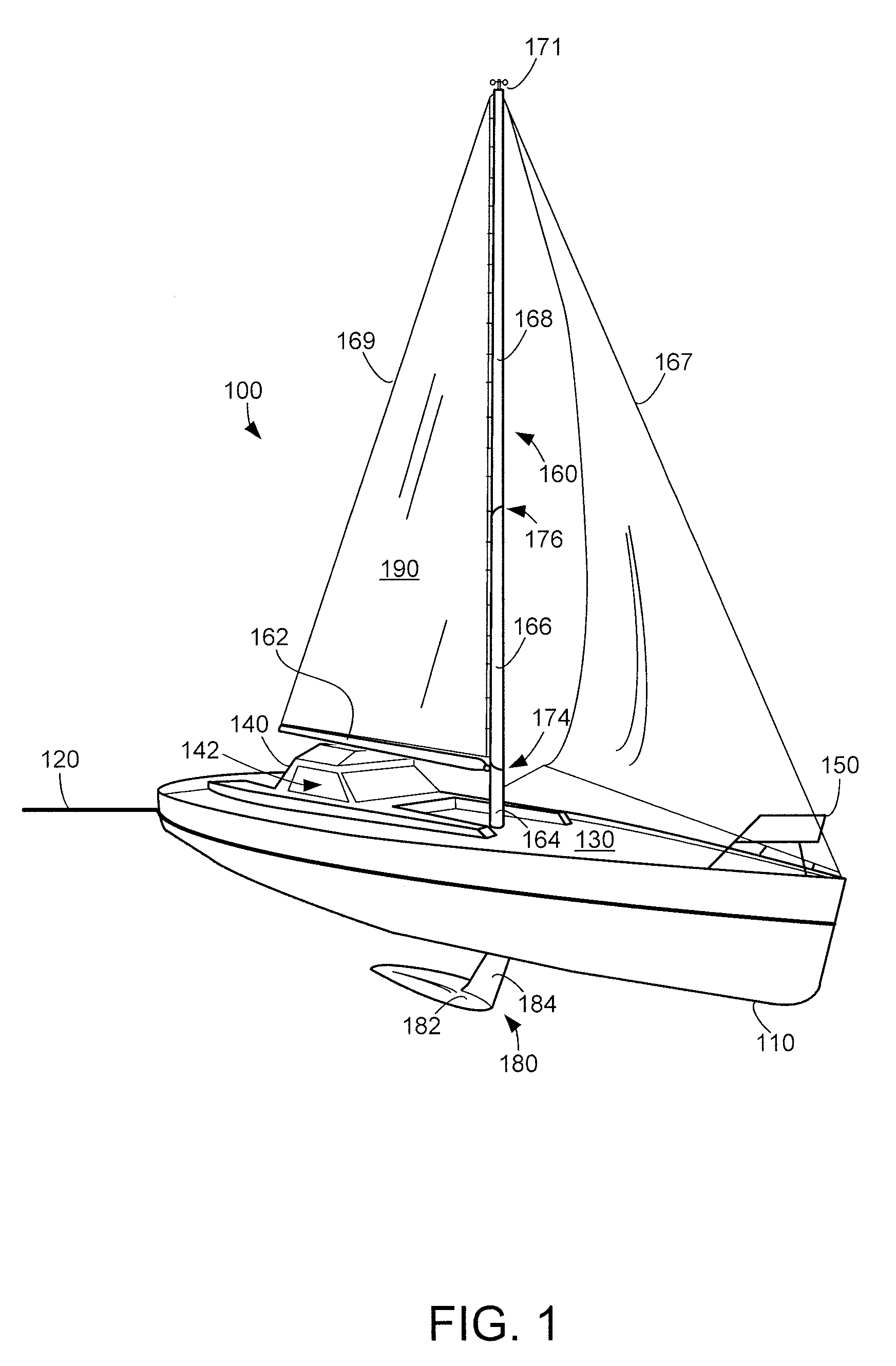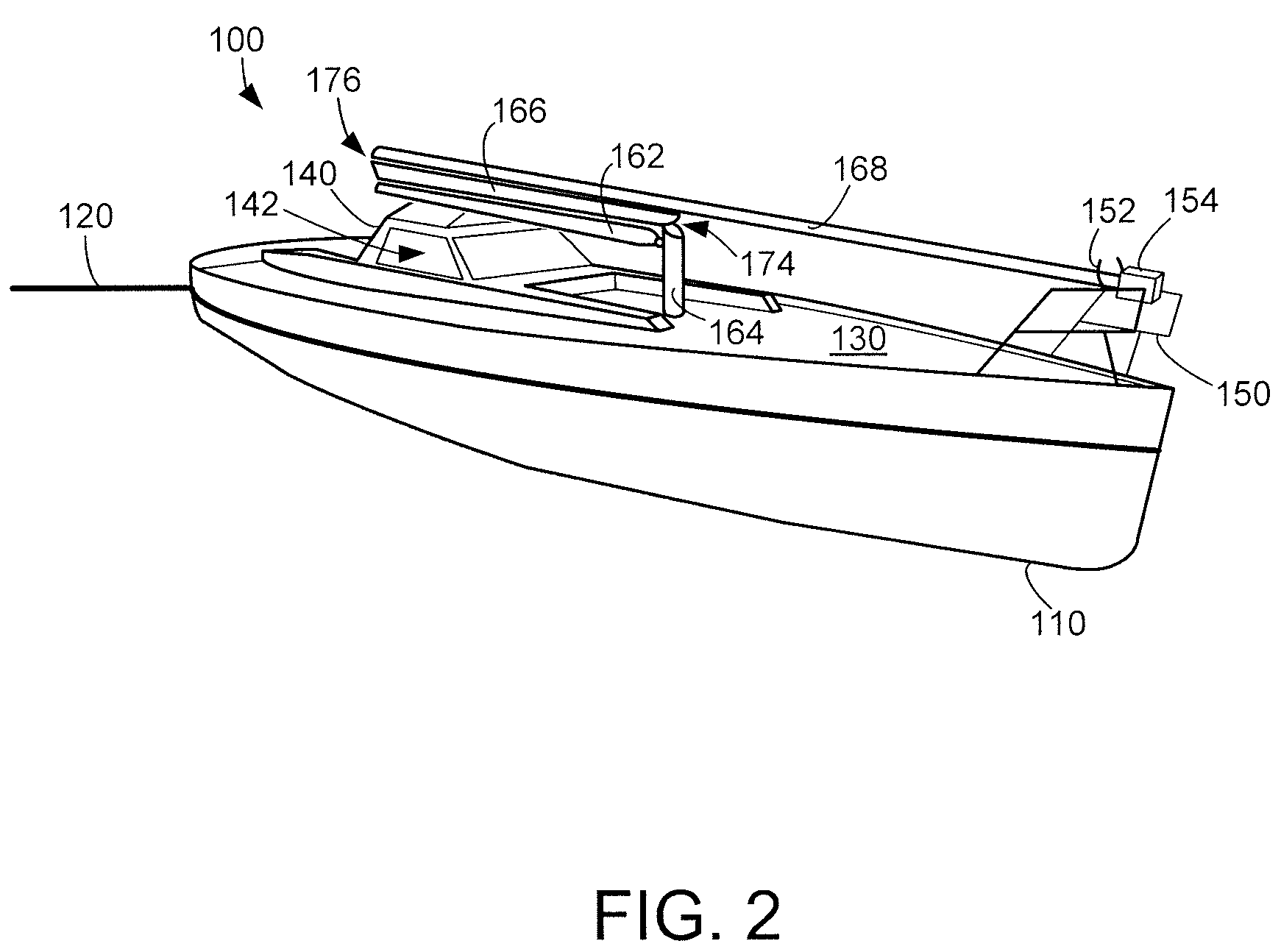Foldable Mast Assembly for a Sailing Vessel
a sailing vessel and mast technology, applied in the field of sailing vessel mast assembly, can solve the problems of limiting the use or transportability of watercraft, limiting the ability of sailing vessels to pass under low lying structures, and difficult transportation of sailing vessels, so as to achieve easy folding and reduce discontinuities
- Summary
- Abstract
- Description
- Claims
- Application Information
AI Technical Summary
Benefits of technology
Problems solved by technology
Method used
Image
Examples
Embodiment Construction
[0030]Referring to FIG. 1, an example watercraft having a sailboat configuration is provided. In particular, FIG. 1 illustrates a watercraft 100 including a hull 110 which is at least partially submerged beneath water line 120. As illustrated in FIG. 1, hull 110 may be configured as a displacement hull, at least during some conditions. Hull 110 may include a deck 130, which may at least partially support a bridge 140, a cockpit area 142, a pulpit 150, and a mast assembly 160.
[0031]Mast assembly 160 may include a boom 162 and / or other suitable structure for supporting one of more sails. Mast assembly 160 including boom 162 is shown in FIG. 1 supporting a sail 190. Boom 162 may include a furling system, whereby sail 190 can be at least partially stored within the boom structure, for example, by rolling within an internal region of the boom. Boom 162 may be coupled to mast assembly 160 at lower mast section 164.
[0032]Mast assembly 160 may also include one or more sensors indicated gene...
PUM
 Login to View More
Login to View More Abstract
Description
Claims
Application Information
 Login to View More
Login to View More - R&D
- Intellectual Property
- Life Sciences
- Materials
- Tech Scout
- Unparalleled Data Quality
- Higher Quality Content
- 60% Fewer Hallucinations
Browse by: Latest US Patents, China's latest patents, Technical Efficacy Thesaurus, Application Domain, Technology Topic, Popular Technical Reports.
© 2025 PatSnap. All rights reserved.Legal|Privacy policy|Modern Slavery Act Transparency Statement|Sitemap|About US| Contact US: help@patsnap.com



